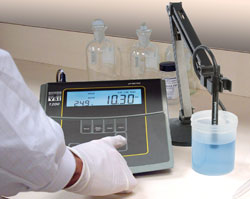pH measurement

Intragastric pH measurement is a diagnostic procedure during which the measurement of the acidity level in the stomach, esophagus or duodenum is performed. This method is widely adopted because most common inflammatory diseases of the gastrointestinal tract are based on the changes in its acidity. In case of such conditions this procedure helps choose adequate tactics of therapy and control the course of treatment.
The indications for pH test include:
- Gastric and duodenal ulcer
- Various forms of chronic gastritis, duodenitis, dyspepsia
- Gastroesophageal reflux disease (GERD)
- Zollinger – Ellison syndrome (tumor of the insular apparatus of the pancreas)
- Barrett esophagus (a complication of GERD in which the changes of the esophageal epithelium develop)
- Conditions after gastrectomy
The main tests performed to determine pH can be conditionally subdivided into the following groups:
- 24 hour esophageal pH monitoring
- 24 hour intragastric pH monitoring
- Short-term intragastric pH measurement (performed during 2-3 hours)
- Express pH measurement (15-20 minutes)
- Endoscopic pH monitoring (during gastroscopy)
Each of the tests implies insertion of a flexible pH-metric probe into the corresponding segment of the gastrointestinal tract. This probe has several measuring electrodes used to measure the acidity in the exact point where this electrode is placed. The probe is inserted through the mouth or nose. Depending on the test purposes, the probe may be left in the cavity of the organ for half an hour and up to a day or even more.
pH measurement should be performed in the fasted state. The patient should not eat or smoke 12 hours before the procedure. Fluid intake is prohibited about 3-4 hours before the beginning of the test. Also, it is necessary to stop taking drugs before this procedure.
